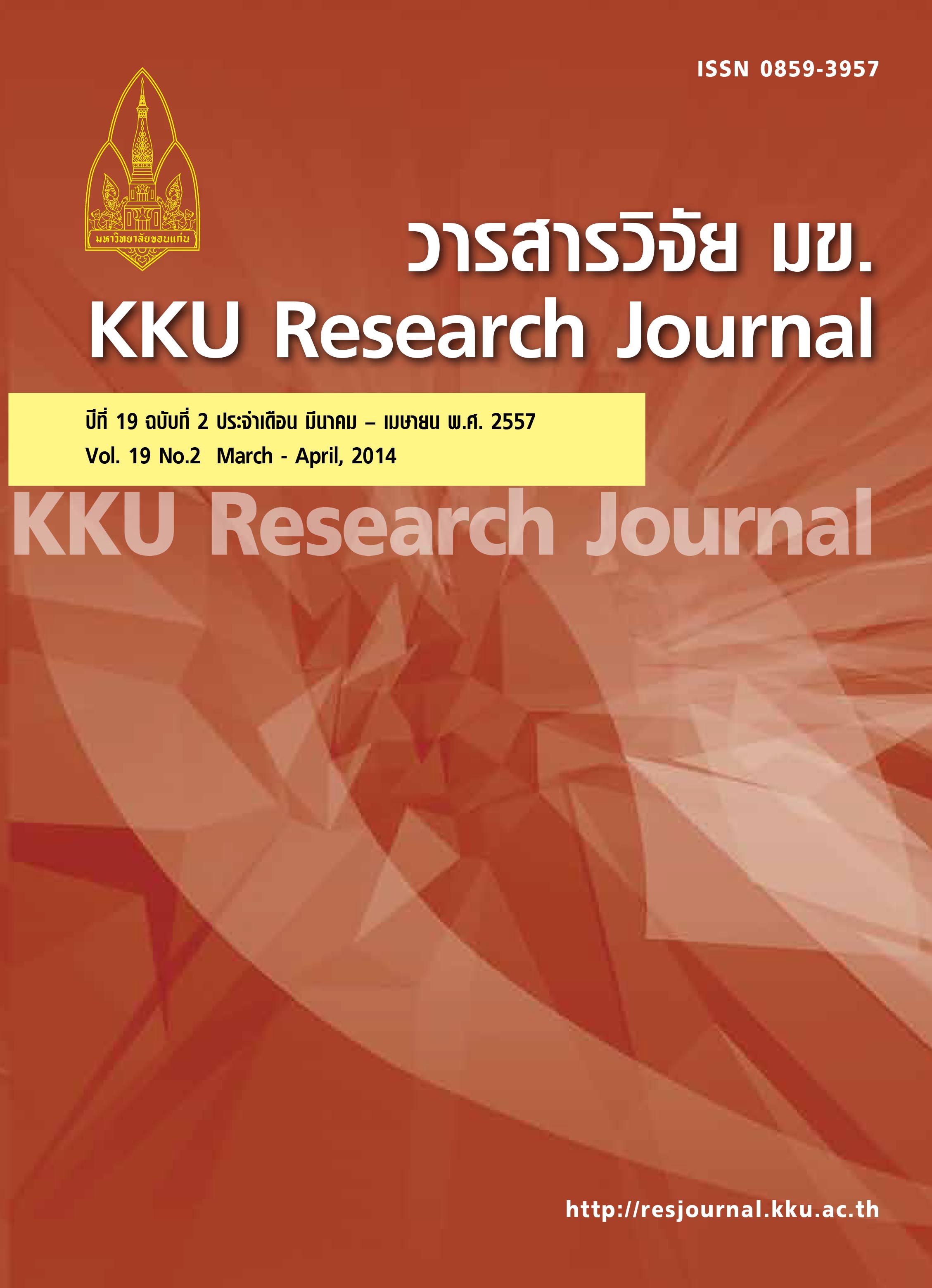Surface roughness prediction of 6061-T6 aluminum alloy in milling using regression model
Main Article Content
Abstract
This research aims to study the factors affecting the surface roughness of 6061-T1 aluminum and determine the regression model for predicting the surface roughness in precision milling process by CNC machining center machine. The 23 factorial design of experiments were conducted with center points. Three factors, namely spindle speed, feed rate and depth of cut were studied in the experimental design. The experimental results indicated that the significant factors were main effect of feed rate and interaction effect of depth of cut and feed rate. The regression model was established and used to determine the minimum surface roughness with depth of cut of 1.25 millimeter, spindle speed of 1250 revolution per minute and feed rate of 150 millimeter per minute. After verification experiments, the significance and validity of the models were confirmed. Therefore, it could be concluded that established regression model was the reliable tool to predict the surface roughness of 6061-T1 aluminum in precision milling process by CNC machining center machine.
Article Details
How to Cite
Chantasee, S., & Punsomsakul, S. (2017). Surface roughness prediction of 6061-T6 aluminum alloy in milling using regression model. Asia-Pacific Journal of Science and Technology, 19(2), 293–304. retrieved from https://so01.tci-thaijo.org/index.php/APST/article/view/82939
Section
Research Articles

